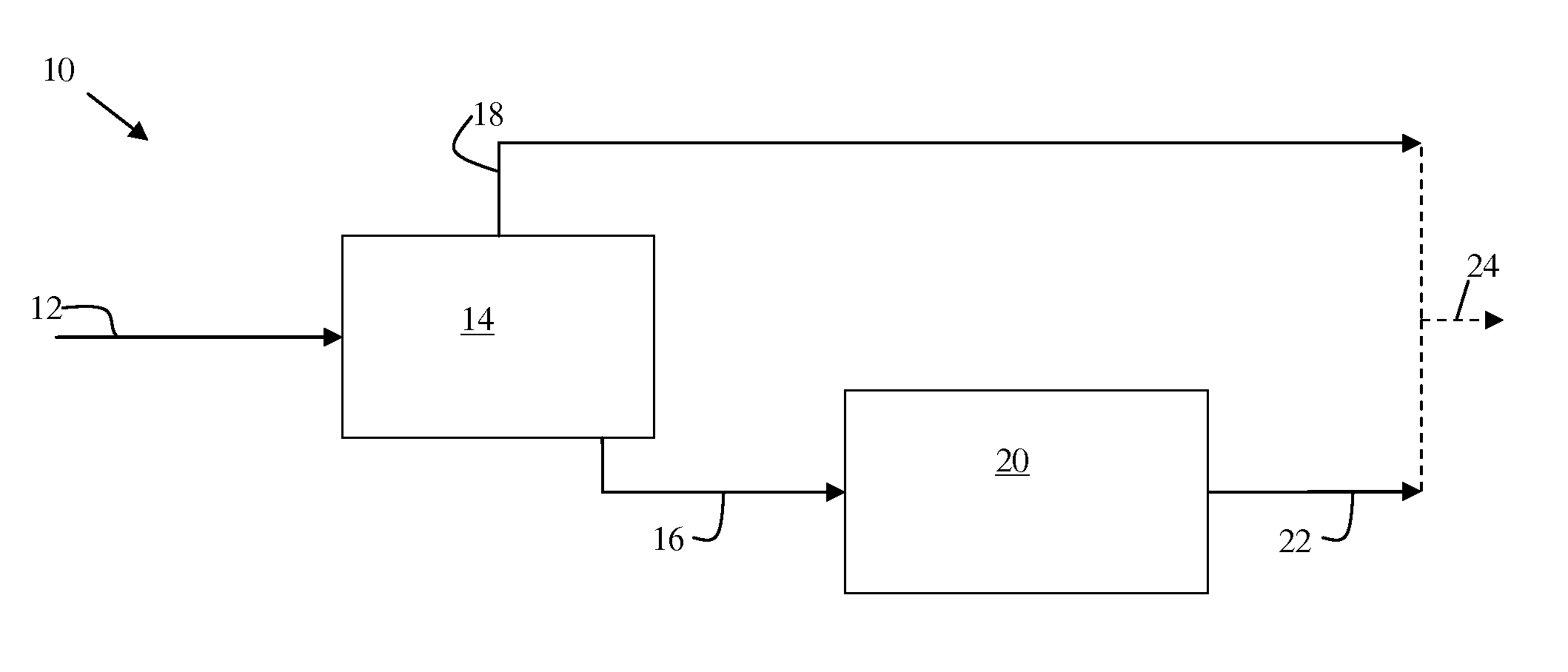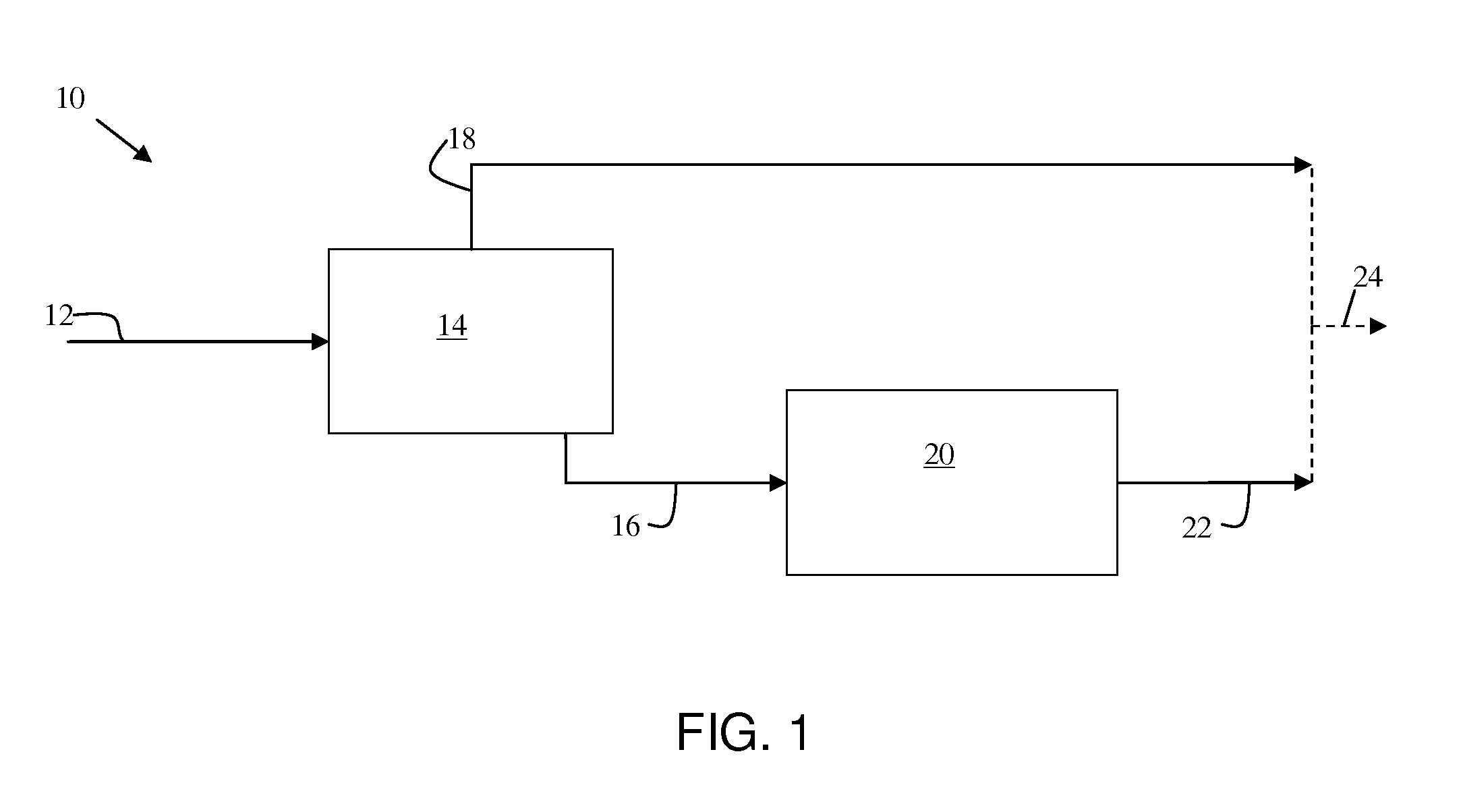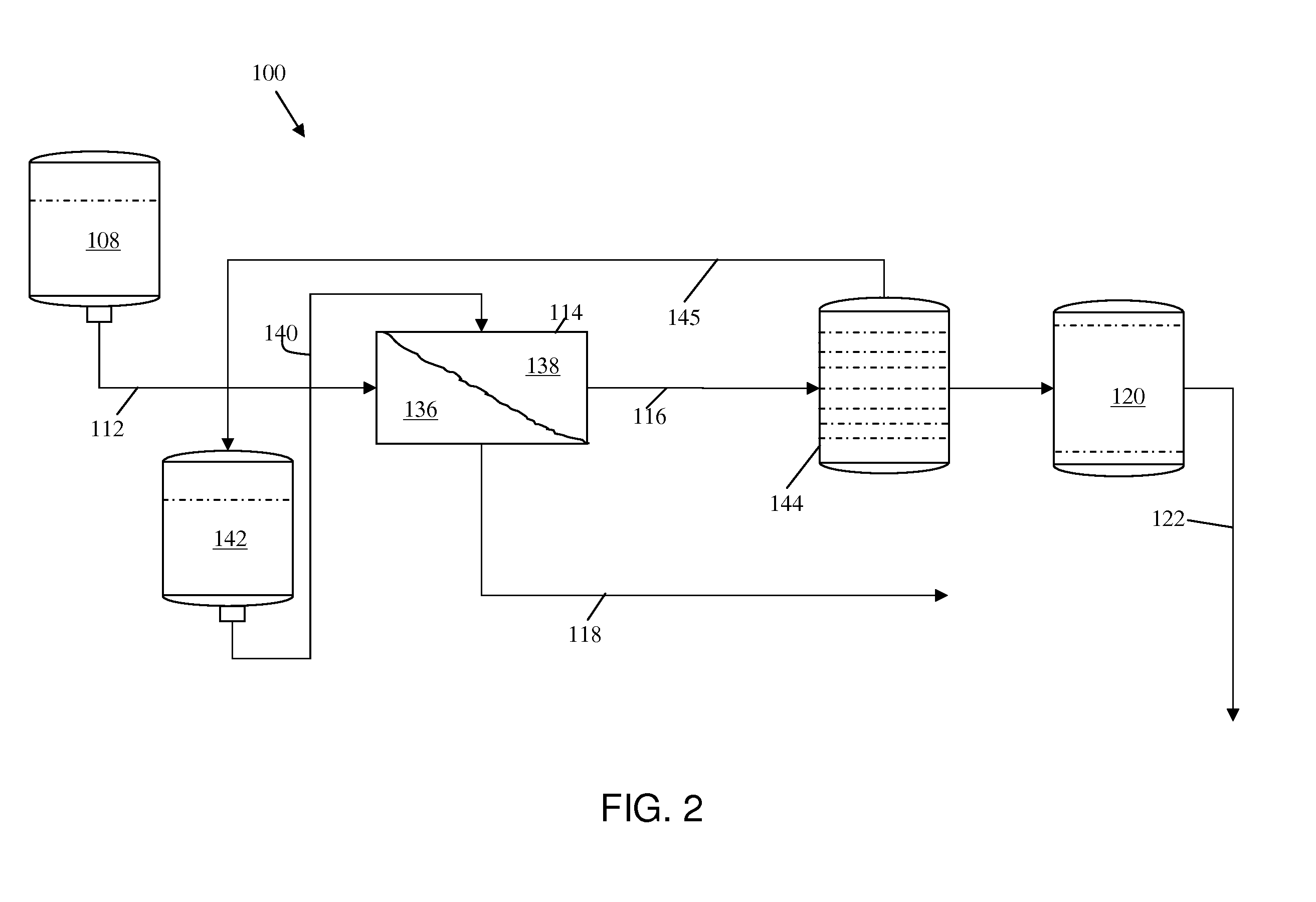Membrane desulfurization of liquid hydrocarbons using an extractive liquid membrane contactor system and method
- Summary
- Abstract
- Description
- Claims
- Application Information
AI Technical Summary
Benefits of technology
Problems solved by technology
Method used
Image
Examples
example
[0050]Membrane contactors using polyvinylidene fluoride (PVDF) flat sheet ultrafiltration membranes were constructed and tested in accordance with the present invention. The membranes were about 125 μm in thickness, had pores of 0.1 μm or 0.2 μm, and a porosity of 70%, 75% or 80%. Furfural was used as the extractive solvent. The flow rate of both the extractive solvent and the hydrocarbon streams was set at 10 milliliters per minute. Table 3 provides the results indicating effective mass transfer coefficients (in centimeters per hour).
TABLE 3Mass TransferHydrocarbon streamMembrane ContactorCoefficientArab light crude 0.1 μm pore, 70% porosity0.25(1.9% w / w sulfur)Diesel (1.5% w / w sulfur)0.1 μm pore, 70% porosity0.19Diesel (1.5% w / w sulfur)0.1 μm pore, 75% porosity0.28Diesel (1.5% w / w sulfur)0.2 μm pore, 80% porosity0.37
PUM
 Login to View More
Login to View More Abstract
Description
Claims
Application Information
 Login to View More
Login to View More - R&D
- Intellectual Property
- Life Sciences
- Materials
- Tech Scout
- Unparalleled Data Quality
- Higher Quality Content
- 60% Fewer Hallucinations
Browse by: Latest US Patents, China's latest patents, Technical Efficacy Thesaurus, Application Domain, Technology Topic, Popular Technical Reports.
© 2025 PatSnap. All rights reserved.Legal|Privacy policy|Modern Slavery Act Transparency Statement|Sitemap|About US| Contact US: help@patsnap.com



